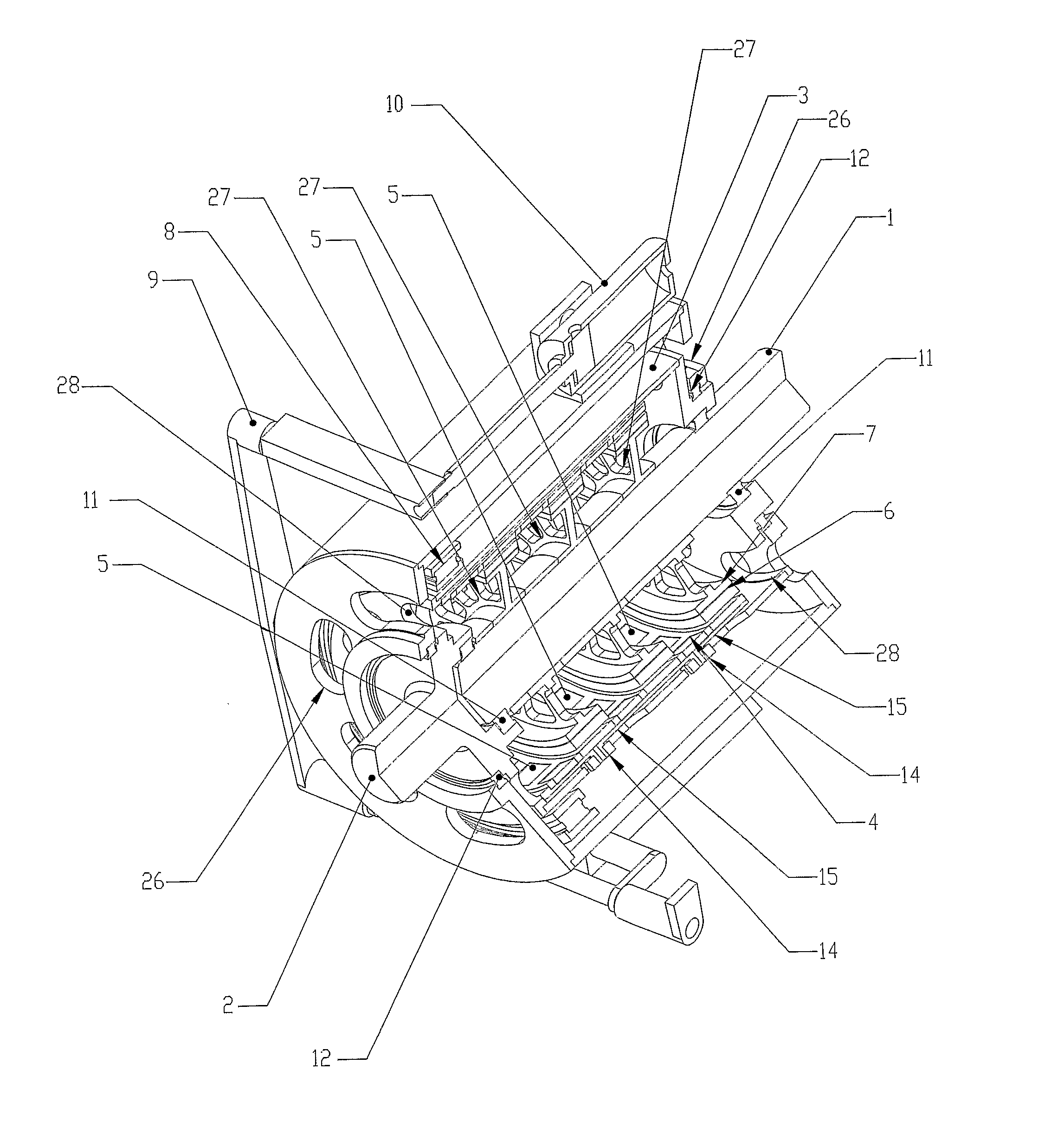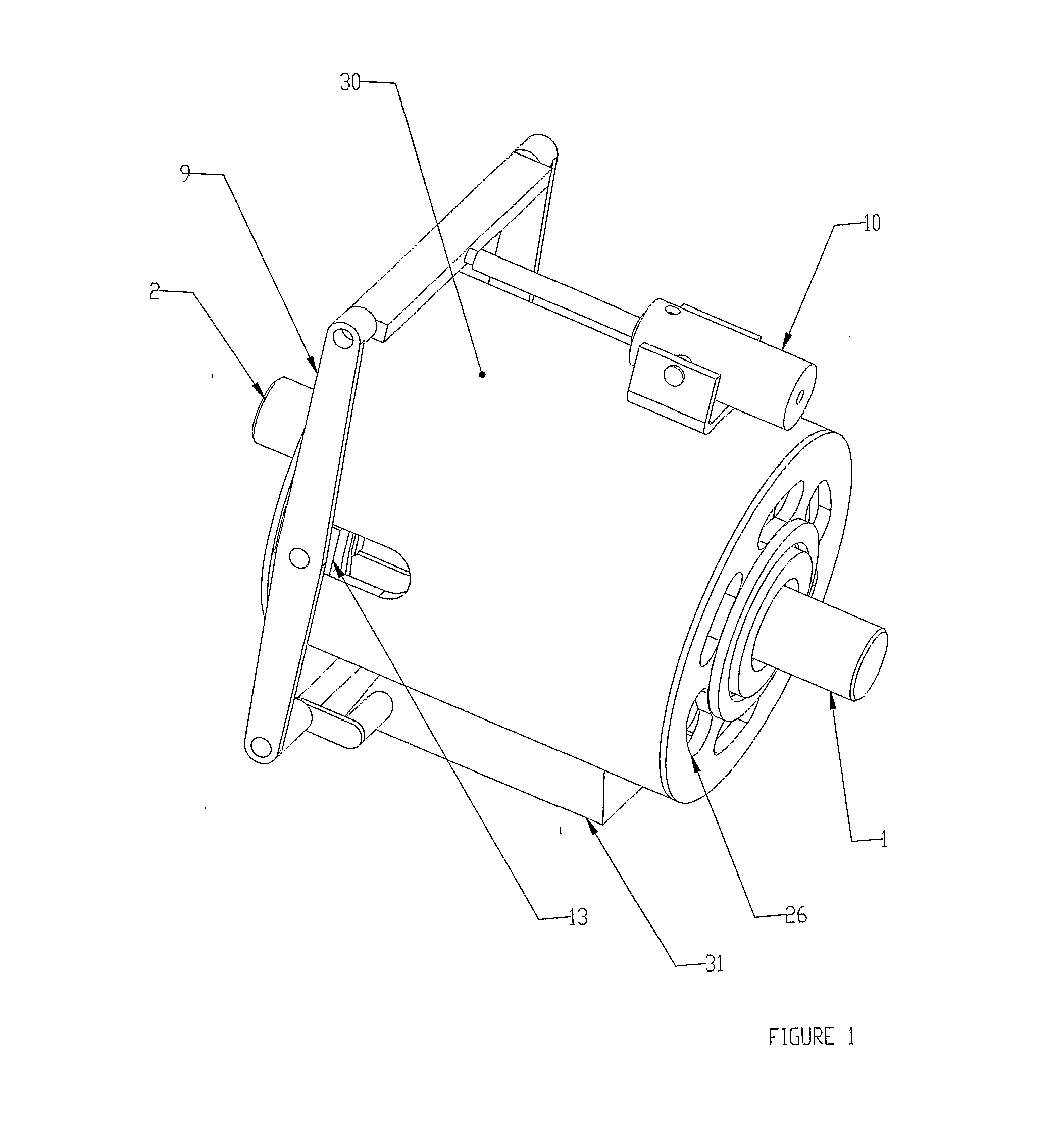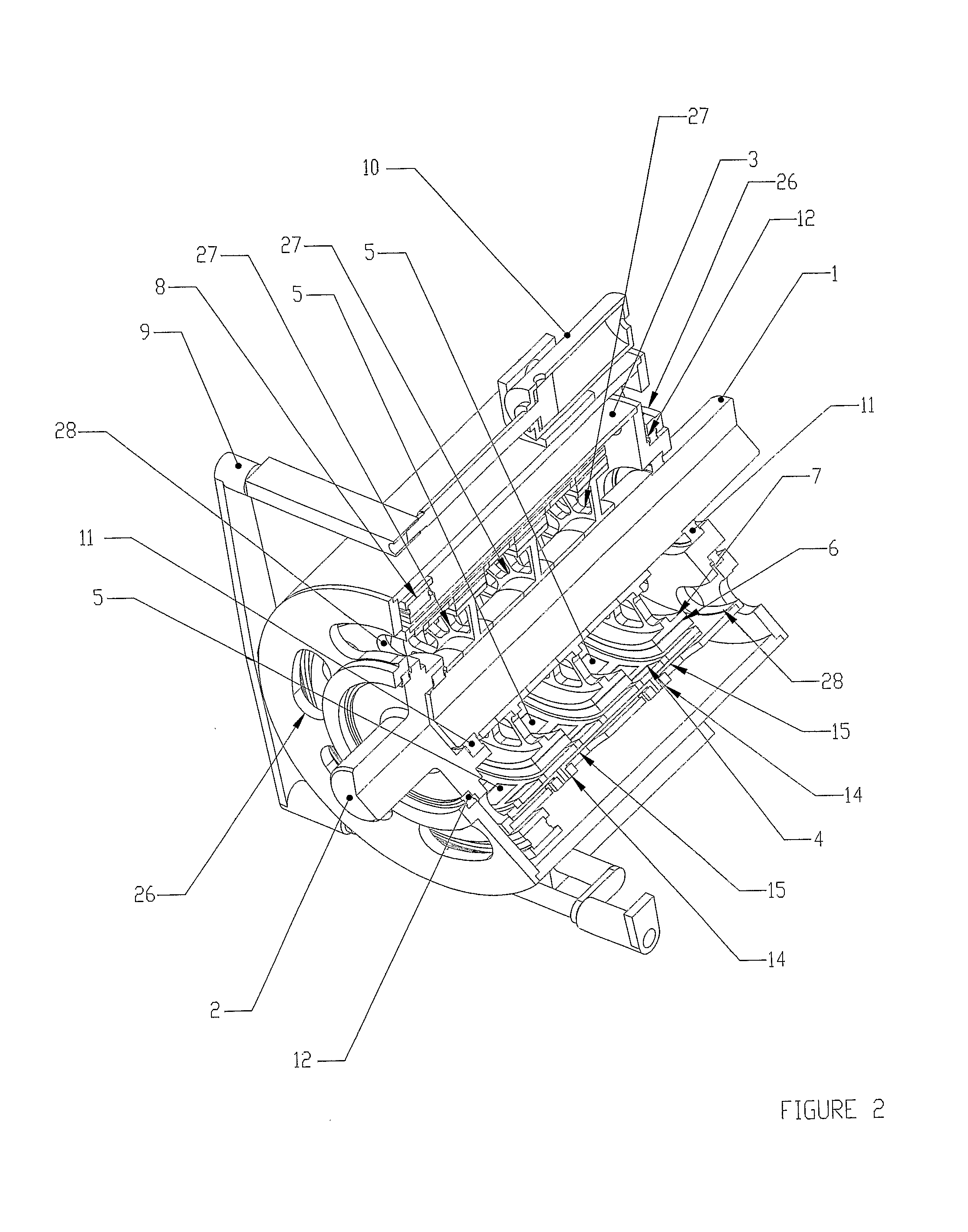Apparatus for transferring torque magnetically
a magnetic transfer and torque technology, applied in magnetically actuated clutches, asynchronous induction clutches/brakes, electrostatic holding devices, etc., can solve the problems of eddy current devices, limited torque transmission ability of current fixed gap permanent magnet disk clutches, and instability at higher speeds
- Summary
- Abstract
- Description
- Claims
- Application Information
AI Technical Summary
Benefits of technology
Problems solved by technology
Method used
Image
Examples
first embodiment
[0026] Referring to FIGS. 1 through 4, the invention is shown and described as it applies to a variable speed drive application. The first part of the variable speed torque transfer apparatus described in this preferred embodiment consists of a primary rotary member comprising an input shaft rotor (2), a support cylinder (3), and a magnet-carrying rotor (4), all mechanically connected together, and constrained to rotate at the same angular velocity together. The second part of the variable speed torque transfer apparatus described in this preferred embodiment consists of a secondary rotary member comprising an output shaft rotor (1), magnetically permeable ferrous wheels (7) which support and back the electro-conductive rings (6), all mechanically connected together, and constrained to rotate at the same angular velocity together. The input shaft (2) is connected directly to a concentric support cylinder (3), which is constrained to rotate with the input shaft (2). The support cylin...
third embodiment
[0035] A second alternative embodiment, or third embodiment, is depicted in FIGS. 8 and 9. In this second alternative embodiment, the relative axial position of the two co-axial cylinders remains fixed at what ever axial position the end user desires. This is a mechanically simpler embodiment than the previously described embodiments, and is used in services that do not require the output rotating shaft's angular velocity to vary appreciably from the input rotating shaft's angular velocity while operating. Yet, all the other advantages of the preferred embodiment remain; i.e., relaxed alignment requirements, less shaft-to-shaft vibration transmission, etc. The first part of this torque transfer apparatus described in this second alternative embodiment consists of a primary rotary member comprising an input shaft rotor (218) and a magnet-carrying rotor (220), mechanically connected together, and constrained to rotate at the same angular velocity together. The second part of this torq...
PUM
 Login to View More
Login to View More Abstract
Description
Claims
Application Information
 Login to View More
Login to View More - R&D
- Intellectual Property
- Life Sciences
- Materials
- Tech Scout
- Unparalleled Data Quality
- Higher Quality Content
- 60% Fewer Hallucinations
Browse by: Latest US Patents, China's latest patents, Technical Efficacy Thesaurus, Application Domain, Technology Topic, Popular Technical Reports.
© 2025 PatSnap. All rights reserved.Legal|Privacy policy|Modern Slavery Act Transparency Statement|Sitemap|About US| Contact US: help@patsnap.com



